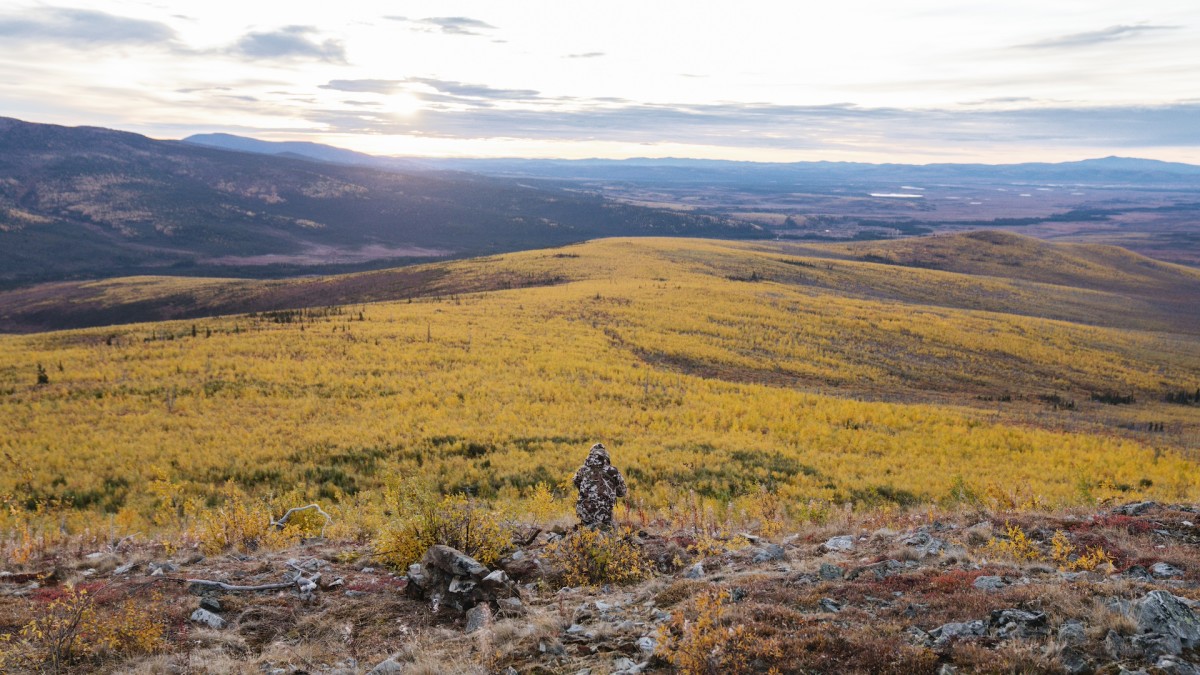
The BLM in Alaska is seeking to open 28 million acres of land to mining, oil, and gas development across broad swaths of the state. The land, while owned and managed by the BLM, is under special restrictions currently prohibiting extractive development—and has been since the 1973 Alaska Native Claims Settlement Act (ANCSA).
In essence, ANCSA is the Alaskan alternative to a reservation system for native people. It handed over 44 million acres of federal land to native corporations and their indigenous shareholders. The corporations function like businesses, investing in all manners of enterprises and divvying out dividends to their stakeholders. The corporations also manage big chunks of private land, mostly retaining it for subsistence food harvest like moose and caribou hunting, berry foraging, and fishing.
But also, as part of ANCSA, the Secretary of Interior “withdrew” an additional 57 million acres of BLM land from future development—about the size of Utah or Minnesota—for the purpose of “public interest.” In the years since, that phrase has come to mean subsistence and sport hunting, cultural relationships, flora and fauna health, and recreation on the nearly untouched lands (which are also called “D1” lands), named after the corresponding clause of ANCSA.
The same clause, however, also gave the Secretary of Interior the ability to reevaluate the needs to keep D1 lands at any time. For nearly three decades, the land remained untouched. But in 2004, congress passed the Alaska Land Transfer Acceleration Act, intended to assist with land transfers still resulting from ANCSA. As part of the 2004 legislation, the BLM penned a report recommending that D1 status be revoked from 87% of lands (50 million acres). To summarize the 126-page behemoth, the BLM claimed that the intent of D1 land was to limit appropriations in order to complete resource inventory and value assessments, which would then allow for “orderly development” of the land.
Revoking D1 status would not only allow for oil and mineral development, but would also open the land to “disposal” (government jargon for sale) to the State of Alaska or private entities. Following the report, the Secretary of Interior set the process in motion for opening up those 50 million acres.
It didn’t come to fruition for over a decade, but in 2018, the BLM successfully motioned to remove protections from D1 lands in the Goodnews Bay region with little other than a public notice in the Federal Register (somewhat ironically, for a decision grounded in what the BLM considered the best “public interest” of the land.) Ultimately, the decision resulted in the transfer of 40,000 acres from the BLM to the State of Alaska. At the time, the acting BLM state director told the press, “BLM Alaska understands it is a priority to Governor Dunleavy to see the state obtain title to its remaining entitlement, and BLM stands ready to convey lands at the state’s request.”
Now, the BLM is ramping up the pressure to remove protections from 28 million more acres—an initiative backed by five public land orders made by the Trump administration in 2021.
Local residents near the proposed land transfers oppose the BLM’s move, for the most part. In an October 2023 letter to Secretary of Interior Deb Haaland signed by 78 Alaskan tribal governments, the signees write, “For Alaska Native communities off the road system, over 80 percent of food consumed comes directly from the surrounding lands and waters…In this rapidly changing environment with so many future unknowns, it is in the public interest to adopt a precautionary action and prioritize the protection of the natural environment that supports our peoples’ subsistence resources over the industrial exploitation of intact lands and pristine waters.”
It’s worth noting, however, that not all the open lands would be developed—or even have resources viable for extraction. Take the Nome region, for instance, where the BLM associate field manager Tom Sparks told a local newspaper, “There’s a bunch of laws and regulations about what it takes to actually mine on public lands…there really isn’t a lot going on in the federal lands concerning mining in our region, and the reason for that is because most of the lands with high mineral potential are not owned by the federal government. They’re owned by the Native corporations and the state of Alaska.” Other regions, though, like the Kobuk-Seward Peninsula, have huge mineral and oil reserves on federal land.
To many, it feels like choosing between the short-term income boost from mining, oil, and gas development or the long-term prospects of using the land to harvest food for generations to come. That’s to say, it’s not always a black-and-white issue for locals.
But locals aren’t the only ones who have a stake in the land. Considering that it’s federal public land, hunters in the Lower 48 should be taking an interest as well. If you’ve ever wanted to go on a once-in-a-lifetime moose or caribou hunt on untouched tundra and spruce forests in the Last Frontier, then this decision impacts you, too.
Good news for hunters: Environmental Impact Statements for the withdrawals are open to public comment until Feb 14. Following the comment period, the Secretary of Interior will decide how to proceed with the land. Make your voice heard on the issue here.




